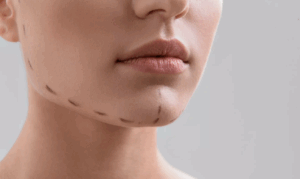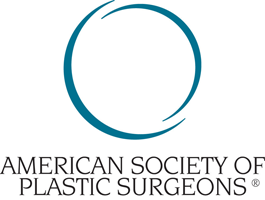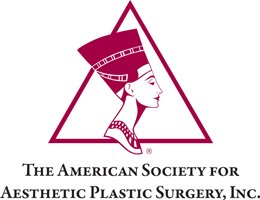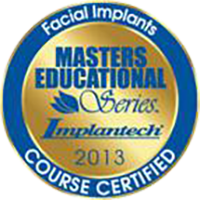Lower Face (Jaw) Re-Shaping
Why perform a reshaping of the jaw? Before a discussion, one must know some have an understanding of the importance of this area. The lower face is comprised mainly of the jaw (mandible), though the soft tissue is also an important part. The mandible (lower jaw) can be divided into three components: the chin, the body, and the angle. Each has an impact on the aesthetic appearance of an individual.
The chin impacts a person by making him/her appear weak or strong. Jawline augmentation can also enhance the neck by how much it projects. A fuller chin or well-defined jaw gives a more favorable appearance to a person, whereas the opposite is true for the weaker chin or less full jaw. Of course, the opposite can be true in terms of over-masculinization. This may be caused by the chin having too much projection or having a square chin when a more rounded one is aesthetically pleasing. Also, if the angle of the mandible has too much projection. This may be improved by the so-called “V-line” surgery.
Body of the Mandible (Jawline)
The jawline represents a very youthful and aesthetically pleasing aspect of the lower face. It is a feature that is requested often and can be achieved either by reduction of the soft tissue of the neck through liposuction or enhancement through an extended chin implant, a mandible angle implant, or a total (wrap-around) mandible implant. However, if there is a choice between the two options, an implant is definitely the best option as these implants frequently need to be customized for the individual.
Implants
Chin implantation is a very common procedure. The implants are usually made from a solid silicone material, though other materials are used. Mandible angle implants are composed usually of a solid silicone material. Both of these implants can be obtained without specific customization. However, if a patient wants a projection that is not offered from the available sizes, they would require a specific design and customization.
Surgical Approach
Chin implants:
Chin implants can be placed either from an intraoral approach (inside the mouth) or an external approach (under the chin). The inside approach is usually chosen to avoid a scar. The incision is done inside the mouth in the middle between the lip and the gingiva. There is a slightly higher risk of an infection, but it provides a direct view of the placement. An external approach leaves a small scar; however, it has a lower chance of infection. The approach may be a bit more technically challenging because the pocket requires exact placement. Chin plastic surgery can have a dramatic and powerful impact on the lower face and the neck.
Mandible Angle Implants:
Mandible angle implants are traditionally used to “masculinize” the lower face. These implants can be used to vertically lengthen the face, provide outward projection (make the lower face more “square”), or a combination of both. The approach is most often from inside the mouth (intraoral), but an external approach is possible too.
Wrap-around Mandible Implant:
These implants are created specifically for the individual patient. They need to be designed using 3D CT scans. The data, from the CT scans, are then used to create an image of the mandible. Once the implant is designed and created, it is placed through 3 small incisions: two inside the mouth and one under the chin. The recovery is usually 2-3 weeks. The results can have a profound impact on the individual’s lower face. It is an operation that will combine all aspects of the jaw, the chin, body, and angle of the mandible, in one sitting. It can increase the height and the width of the angle of the mandible, resulting in a square jaw appearance, and create a square appearance of the chin with more projection, if desired.
The wrap-around implant can also reshape the body of the jaw. It can give a very straight and “sharp” appearance and enhance the neck along.
These types of implants are custom-made for each patient and are designed to cover the entire bony surface of the jaw (mandible) and are made from various types of materials such as solid silicone, Omnipore, or titanium. They are typically placed from two incisions in the mouth (behind the last molars) and under the chin. In certain cases, they are placed entirely externally (small incisions behind the angle of the mandible) and under the chin.




